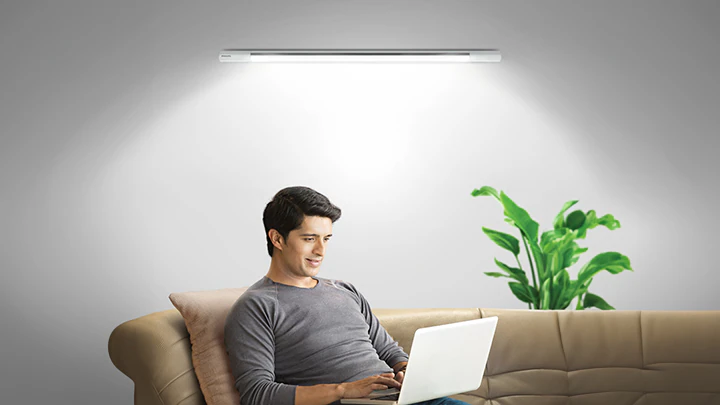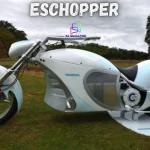When it comes to modern lighting solutions, few fixtures match the practicality, efficiency, and sleek design of a batten light. These long, narrow lighting fixtures have become increasingly popular in homes, offices, commercial spaces, and even industrial environments. Known for their versatility and ease of installation, batten lights are an excellent alternative to traditional tube lights and outdated fluorescent systems.
But what exactly is a batten light, and why has it become such a staple in modern lighting design? In this comprehensive guide, we’ll explore everything you need to know about batten lights—from how they work to where you should use them, and what to look for when buying one.
What Is a Batten Light?
A batten light is a linear lighting fixture that is typically mounted on a ceiling or wall. The name “batten” refers to the narrow and elongated casing that houses the light source. Traditionally, batten lights were designed to accommodate fluorescent tubes. However, with the rise of LED technology, LED batten lights have become the preferred choice due to their energy efficiency, longevity, and brighter output.
Batten lights are available in different lengths (e.g., 2ft, 4ft, 5ft, or 6ft), making them suitable for a variety of applications. They offer wide-angle illumination and are ideal for lighting up large areas evenly.
Evolution: From Fluorescent Tubes to LED Batten Lights
In the past, fluorescent batten lights were the standard choice in garages, schools, kitchens, and factories. These consisted of long, glass tubes filled with gas and required a ballast to regulate current and a starter to help the light begin operating.
However, fluorescent lights come with several drawbacks:
- Flickering before fully turning on
- High energy consumption
- Heat emission
- Mercury content (a hazardous material)
The advent of LED batten lights has resolved many of these issues. LED technology has introduced long-lasting, flicker-free, energy-saving lighting that requires minimal maintenance. Today, LED batten lights dominate the market thanks to their impressive efficiency and environmental benefits.
Benefits of Using Batten Lights
Whether you’re looking for a lighting solution for your home or a commercial setup, batten lights offer a host of advantages. Here are some of the key benefits:
1. Energy Efficiency
LED batten lights use up to 80% less energy than their fluorescent counterparts. This leads to significant savings on electricity bills over time, especially in commercial or industrial environments where lighting runs for long hours.
2. Long Lifespan
A standard LED batten light can last anywhere from 30,000 to 50,000 hours. That means years of consistent use with minimal need for replacement.
3. Instant Start
Gone are the days of flickering lights and slow starts. Batten lights, particularly LEDs, power on instantly at full brightness with no delay.
4. Even Light Distribution
Thanks to their elongated design, batten lights offer excellent light distribution. They minimize shadows and dark corners, making them ideal for large or busy spaces.
5. Minimal Heat Emission
Unlike incandescent or halogen lights, batten lights emit very little heat, making them safer and more comfortable to use, especially in enclosed spaces.
6. Eco-Friendly
LED batten lights are free from mercury and other toxic substances. Additionally, because of their low power consumption, they contribute to a reduced carbon footprint.
7. Modern Aesthetic
Sleek and minimalistic, batten lights blend seamlessly into contemporary interior designs, adding a clean and sophisticated touch.
Common Uses of Batten Lights
One of the reasons batten lights are so popular is their incredible versatility. Let’s explore the different spaces and applications where batten lights are commonly used.
1. Residential Spaces
In homes, batten lights can be used in:
- Kitchens for clear visibility while cooking
- Garages or basements for practical, bright lighting
- Hallways and staircases for safety and navigation
- Utility rooms or laundry areas
2. Offices
In the modern workplace, lighting plays a critical role in productivity. Batten lights are commonly installed in:
- Meeting rooms
- Workstations
- Break rooms
- Reception areas
3. Commercial Establishments
From supermarkets and retail shops to salons and showrooms, batten lights help create a well-lit, welcoming environment for customers.
4. Industrial Environments
Warehouses, factories, and workshops demand bright and durable lighting. Batten lights offer the necessary illumination to maintain safety and efficiency.
5. Educational Institutions
Classrooms, labs, corridors, and libraries all benefit from the uniform and glare-free lighting that batten fixtures provide.
6. Outdoor or Semi-Outdoor Areas
With higher IP-rated batten lights (like IP65), you can illuminate:
- Parking lots
- Outdoor passageways
- Sheds
- Covered patios
Types of Batten Lights
Not all batten lights are created equal. Depending on the application, different models serve different purposes.
1. Standard Batten Lights
These are the most common fixtures and are used for general indoor lighting. They come in various lengths and brightness levels.
2. Emergency Batten Lights
Equipped with a backup battery, these lights switch on automatically during a power outage—critical for emergency exits and stairwells.
3. Sensor Batten Lights
Motion-sensor or daylight-sensor battens are perfect for areas where lights don’t need to stay on constantly, like corridors, restrooms, or storage rooms.
4. Dimmable Batten Lights
These allow users to adjust the brightness level, adding flexibility and creating different moods or saving even more energy.
5. Linkable Batten Lights
Designed to be joined end-to-end, linkable batten lights are ideal for large spaces needing continuous illumination without dark gaps.
Choosing the Right Batten Light
With so many options on the market, selecting the right batten light for your space can be overwhelming. Here’s a guide to help you make an informed choice:
1. Size and Length
Batten lights come in different lengths (e.g., 2ft, 4ft, 5ft, 6ft). Choose based on the size of your space and the level of brightness required.
2. Lumen Output
Lumen measures brightness. For small rooms, 1000–2000 lumens may suffice. For larger or high-ceiling areas, consider battens with 3000–5000 lumens or more.
3. Color Temperature
- Warm White (2700K–3000K): Cozy, suitable for living rooms and bedrooms
- Cool White (4000K–5000K): Neutral, ideal for kitchens and offices
- Daylight (6000K–6500K): Crisp and bright, great for garages and industrial use
4. IP Rating
For damp or dusty environments, look for higher IP ratings:
- IP20: Indoor use
- IP44: Damp locations like bathrooms
- IP65: Outdoor or harsh conditions
5. Installation Type
Some battens can be surface-mounted directly to the ceiling or wall. Others may be suspended for aesthetic or practical purposes. Consider what works best for your setup.
6. Power Supply and Voltage
Ensure compatibility with your existing electrical system. Most residential lights work with standard 220-240V systems.
7. Certification and Warranty
Go for products with certifications like CE, RoHS, or UL, and opt for a product with at least a 2-year warranty for peace of mind.
Installation Tips
Batten light installation is generally straightforward, but here are a few things to keep in mind:
- Turn off the power at the circuit breaker before installing.
- Mount the light securely using the provided clips or brackets.
- Connect the wiring properly—usually a live (L), neutral (N), and earth (E) wire.
- For suspended fixtures, ensure they are hung evenly and safely.
- If you’re unsure, hire a licensed electrician to do the job.
Maintenance and Troubleshooting
LED batten lights require minimal upkeep, but periodic cleaning ensures optimal performance. Wipe them down with a dry or damp cloth to remove dust. Avoid using abrasive cleaners.
If the light flickers or doesn’t turn on:
- Check the power supply
- Examine wiring connections
- Replace the unit if it has exceeded its lifespan
Cost Considerations
While LED batten lights may have a slightly higher upfront cost compared to older fluorescent systems, the long-term savings in energy and maintenance more than make up for it. Prices can range based on features:
- Basic indoor LED batten light: $10–$25
- Sensor or emergency batten lights: $30–$60
- Commercial-grade or waterproof models: $50 and up
Environmental Impact
Switching to batten lights, especially LED variants, is a small step with a big environmental payoff:
- Reduced greenhouse gas emissions
- Less landfill waste due to fewer replacements
- No toxic substances like mercury
By choosing energy-efficient lighting, you contribute to a more sustainable future.
Future of Batten Lighting
The future of batten lighting is bright—literally and figuratively. Advancements in smart lighting are integrating batten lights with smart home systems. Soon, you’ll be able to control brightness, color temperature, and schedules via your smartphone or voice assistants like Alexa and Google Home.
We also expect to see:
- Solar-powered batten lights for outdoor use
- Wi-Fi and Bluetooth connectivity
- Dynamic lighting control systems for energy management in commercial spaces
Conclusion
Batten lights are no longer just an industrial staple—they’ve found their way into homes, offices, and everywhere in between. They offer an unbeatable combination of energy efficiency, low maintenance, modern aesthetics, and long-term cost savings. Whether you’re upgrading an old lighting system or planning a new project, batten lights are a reliable, eco-friendly, and versatile solution.
So next time you’re faced with a lighting decision, consider the batten light—not only will your space look brighter, but so will your energy bill and your environmental footprint.







